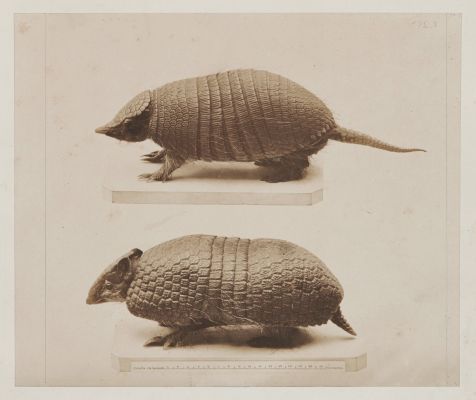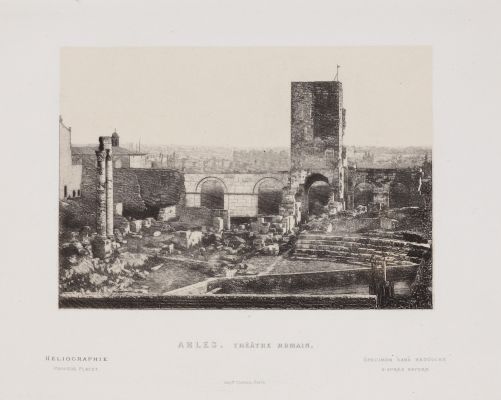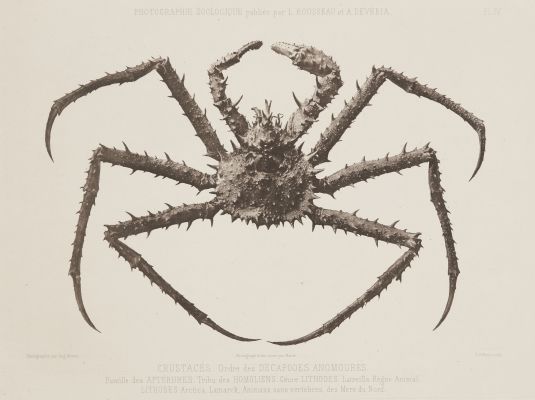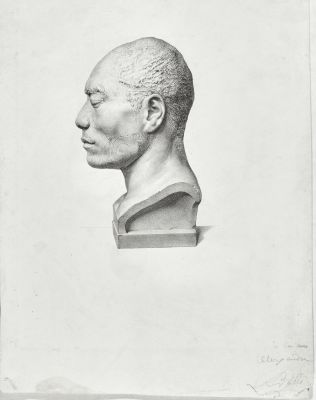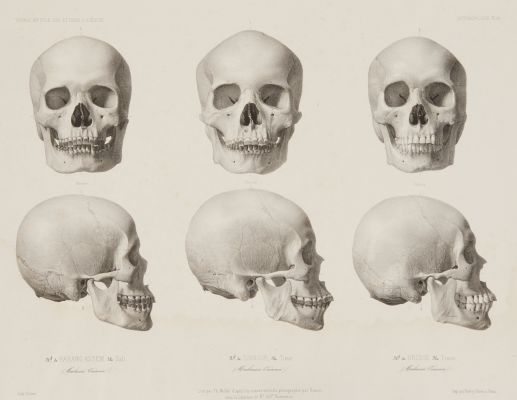
Title
Chartres Cathedral PorchArtists
Bisson, Louis-Auguste (French, 1814-1876)Bisson, Auguste-Rosalie (French, 1826-1900)Date
1856Process
PhotogalvanographAtelier
Photo-galvano-graphic CompanyImage Size
44 x 34.5 cm
The specimen which we have seen is sufficiently good to leave no doubt whatever in the mind of the ultimate success and extensive utility of this new method of multiplying photographs. Thomas Sutton, Photographic Notes, 1856
Mostly now forgotten, in 1854 Paul Pretsch invented one of the fist viable processes for printing photographs in ink. He named it Photogalvanography and launched a business concern, The Photo-Galvano-Graphic Company, to monetize it. One of the first professionals to be impressed the process was Roger Fenton – recognizing the potential of the process for his own work. Fenton partnered with Pretsch and was appointed head of the Photographic Department of the company. The company began its activities with the much-anticipated publication of Photographic Art Treasures (December 1856). Photographic Art Treasures was planned as a series of monthly editions, each part containing four photogalvanographed prints. The Company naturally hoped to become a profitable business, but it advertised a higher purpose. The ‘New Era in Art’, as it was proclaimed, was to enable ordinary people for the first time to see and have in their own homes reproductions of great works. Unfortunately, by 1858 after only five issues, the company, plagued by lawsuits and lack of funds, effectively collapsed.
Examples of photogalvanographs are rare. This large example was never published. Only one other example has been located at the British Museum in London. Chartres Cathedral Porch is from a negative by Bisson. Louis-Auguste Bisson was a 19th-century French photographer. Bisson opened a photographic studio in early 1841. Soon after, his brother Auguste-Rosalie Bisson (1826–1900) entered into partnership with him and they became famous as the Bisson Brothers.
You can read more about Pretsch here : https://photogravure.com/wp-content/uploads/2018/03/PhotographicArtTreasures.pdf
Reproduced / Exhibited
D’encre Et De Charbon: Le Concours Photographique Du Duc De Luynes 1856-1867. Paris: BibliotheÌque nationale, 1994 No. 31
British Museum Registration number 1857,0214.468-469
Albertina Inventarnummer Foto2002/37/46
References
Thomas Sutton Photographic Notes; Journal of the Birmingham Photographic Society of Scotland and the Manchester Photographic Society, Vol. I – III. 1856 – 1858 March 25, 1856

